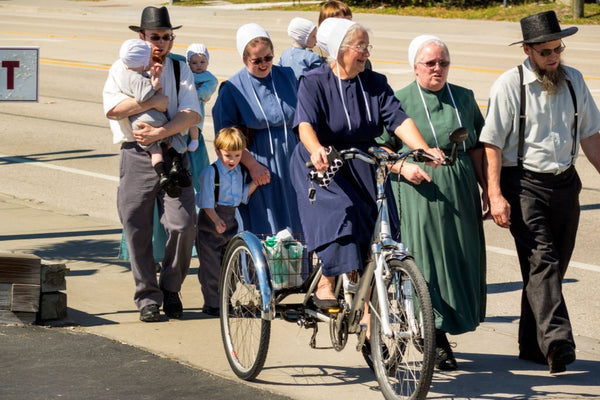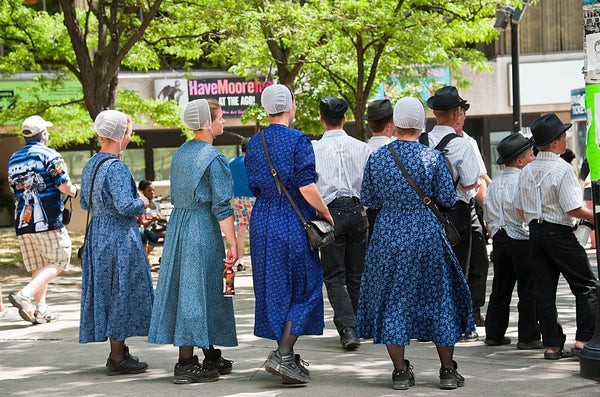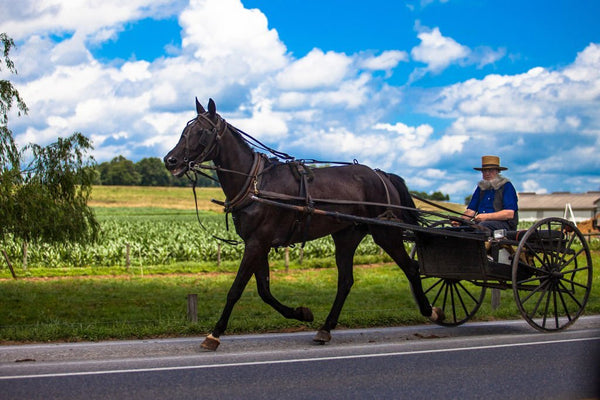The Amish have some pretty unique customs and traditions that set them apart from other American communities, but did you know they have their own community rules, too?
These laws, while not enforced by the state, form a code of conduct for the Amish community. Most of these community rules are heavily influenced by their beliefs and customs. With God’s law as their surest guiding principle, these laws were formulated to protect and preserve Amish culture.
Therefore, they’re considered by community members as steadfast and immutable rules for life. To understand the importance of this unwritten set of rules, handed down through the generations, read our concise guide to Amish law, below.
Amish Laws and Practices

Amish law is often very misunderstood by non-Amish society. The main reason is a lack of knowledge about Amish culture and history. This is mostly the result of the Amish community’s choice to live separately from the distractions of the outside world.
Another key factor is the misinformation surrounding Amish customs and traditions. We aim to clarify a lot of this confusion surrounding Amish law. So, let’s take a look at some of the main rules that the Amish live by, and what their purpose is.
Amish Ordnung
The Amish have no centralized form of government and are led instead by the elders of each autonomous assembly. They are guided by a set of rules they call the Ordnung, which may be revised at times, depending on the needs of the community. However, most Ordnung laws have remained unchanged for hundreds of years.
Ordnung is a German word that can be translated as order, rule, or discipline. Disobedient community members who stray from the principles outlined in the Ordnung risk shunning (called Meidung). This form of punishment is not as severe as excommunication, which is reserved for only the most severe infringements of Amish laws as set out by the Ordnung.
Amish Law on Marriage with Outsiders
Since the arrival of the Amish in the US, they have isolated themselves from modern settlements. First settling in the state of Pennsylvania, many Amish still live here to this day. This is where the term ‘Pennsylvania Dutch’ was coined.

Few outsiders bothered to determine if the Amish are German or Dutch. The unfamiliarity of the germanic dialect confused their American neighbors, who mistook it for Dutch. It could have been a misunderstanding of the word ‘Deutch’, which the Amish settlers called their native tongue.
Either way, this community has its own language, and they continue to speak it in their communities.
They can also speak English. It’s taught to Amish children in their schools so that they can use it to converse with outsiders if necessary.
Unnecessary fraternizing is forbidden, and marriage is only allowed between baptized Amish community members. If a baptized community member were to marry an outsider, they may be shunned by their community. However, if that outsider converts and becomes baptized, it’s allowed.
Amish Law Regarding Modesty in Dress
When first encountering these humble folk in their traditional 17th-century attire, many people wonder if the Amish are a cult. It’s common to fear what you don’t understand, but there’s a very simple explanation for their mode of dress.

The Amish are meant to live simply, and show humility at all times. Women may wear plain dresses, capes, aprons, and bonnets (called kapps). These must be in plain, solid colors, and should cover the upper arms and the legs to the ankles. Black stockings are usually worn underneath.
No jewelry or cosmetics are allowed, and no revealing or suggestive clothing is tolerated. These rules are imposed in an attempt to reflect Biblical recommendations for modesty and simple clothing.
The men are not spared these restrictions. They, too, must eschew vanity and show humility in their style of dress. They wear only simple trousers and shirts, straight-cut coats with no lapels, and broad-brimmed hats are allowed. These too are always solid, subdued colors.
Amish Law Related to the Physical Body
Following the Biblical guidelines above, men are also not allowed to shave or cut their beards, nor are women allowed to shave their bodies. Women must also refrain from cutting their hair, and wear their long hair in a bun under a bonnet.

The reasons for these restrictions are the Amish people’s strict adherence to Old Testament texts.
In the case of Amish men, the prohibition on beard cutting or shaving only takes effect once they marry.
Because the Bible refers to a beard as a sign of adulthood and masculinity, married Amish men will be punished if they cut or remove them. Beard cutting is specifically cautioned against in the Old Testament biblical passage of Leviticus 19:27. However, they may shave their mustaches.
The very next verse, Leviticus 19:28 cautions against the act of tattooing. Therefore, the Amish do not allow their community members to get tattoos. Piercings and earrings are also not allowed, as these are seen as signs of worldliness and vanity.
Amish Law and Spirituality
Religious observance is fundamental to the Amish way of life. God’s will trumps any desires or influences of the modern world. Unlike some other Christian denominations, they believe that baptism should only take place when a child has matured.
They may even venture outside of the community briefly in their late teens or early twenties, to decide for themselves if they want to be baptized. (This is called Rumspringa). However, once the decision to be baptized into the Amish faith and way of life is made, those who stray will be shunned.
Even Amish dolls are subject to spiritual beliefs. They are faceless and lack anatomical features, as the Amish believe that only God creates men and women, and all are equal in the eyes of God.
Another reason for faceless dolls is a long-held belief by some members of the community that dolls can become the instruments of demonic entities. The Amish don’t prohibit playing with dolls, but they don’t allow contemporary dolls to be brought into the community, and their handmade dolls are made without any other discerning characteristics.
Differences in Laws Between Amish Sects
It usually surprises outsiders to hear that there are different types of Amish communities, but they can be divided into two main groups. Old Order and New Order. The Old Order communities are the most strict.
One of the best-known Amish punishments is the practice of shunning, but it is not as widely practiced as many would believe. It is more common in Old Order Amish communities, as New order settlements are more lenient about the use of vehicles, phones, electricity, and sometimes even dress code.
However, one rule on which all Amish agree is the avoidance of violence in any form. They also do not join the military, as it encourages violence. Violence, even if in self-defense, is not tolerated, and is grounds for shunning.
Amish Law and Public Office
Their stance on non-resistance is also tied to the Ordnung’s prohibition of running for political office, as the world of politics is associated with the use of force against others.
Public office and government positions are also connected, even indirectly, with the military, and are therefore forbidden. This ties into their beliefs about violence.
Many people believe that means that the Amish do not vote. This is not the case, and they may vote if they choose to. While they are not exactly forbidden from voting, very few do, and then, usually only on issues that pertain to their interest, such as land zoning.
Voting may be difficult for many Amish due to a lack of official documents. Their babies are born at home, and they do not see the need for birth certificates and social security cards. This further complicates registering to vote. However, New Order Amish communities may be more lenient in such matters.
Amish Law About Technology
You may have spotted an Amish family riding in their horse-drawn buggy along a country road. They were probably on their way to sell Amish traditional food and fresh produce from their handwoven harvest baskets.
Why don’t they drive cars or use modern equipment, even for labor-saving purposes on their farms? The law against using electricity and other modern technologies is rooted in their faith. Modern conveniences may lead to distractions and temptations from the Amish way of life.
Amish believe that if tied too closely to the world, and lose their focus on their simple life of faith and devotion.
Conclusion
Amish law may seem stringent and unyielding, yet it is the backbone of the Amish people, culture, and religious observance.
As a group that shuns modern lifestyle choices and technological conveniences, these laws were put in place to uphold Amish values. Amish law has allowed the people under its authority to adhere to their morals and values, and still prosper in an ever-changing world.
Did You Find Our Blog Helpful? Then Consider Checking:
- What Language Does the Amish Speak
- Amish Names
- Amish Female Names
- Amish Last Names
- Amish Religion
- What Do the Amish Believe Happens After Death
- Amish Rules
- Amish Rules for Women
- Amish Ordnung
- Are Amish Polygamists
- Amish Baptism Ritual
- Amish Rituals
- Amish Shunning Rules
- Amish Sunday Rules
- Amish Marriage Rules

